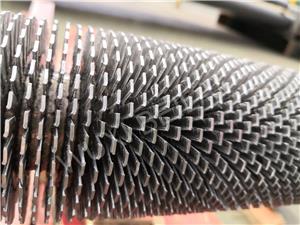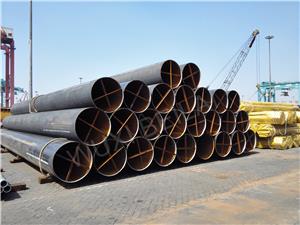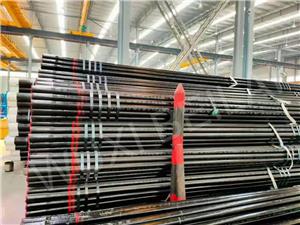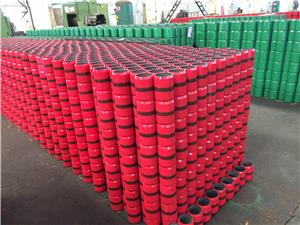Finned Tube Customization: Optimizing Heat Transfer for Industrial Applications
Finned tubes are an essential component in industrial heat exchange systems, playing a crucial role in maximizing heat transfer efficiency. Given the wide range of operating conditions across industries, Finned Tube Customization is necessary to enhance performance, durability, and cost-effectiveness. Customization involves selecting the most suitable materials, fin configurations, tube geometries, and manufacturing techniques to meet specific application requirements.
Key Aspects of Finned Tube Customization
1. Material Selection
The choice of material is a fundamental aspect of finned tube customization, as it directly impacts thermal performance, corrosion resistance, and longevity. Common materials used for finned tubes include:
Carbon Steel: Known for its durability and strength, commonly used in high-pressure applications.
Stainless Steel: Offers excellent corrosion resistance, making it ideal for harsh environments.
Copper: Provides superior thermal conductivity, making it a preferred choice for HVAC and refrigeration applications.
Aluminum: Lightweight with high thermal conductivity, suitable for applications where weight reduction is essential.
The material selection process must consider operating temperature, environmental exposure, and the type of fluid or gas being transferred.
2. Fin Type and Geometry
The configuration of fins significantly influences the efficiency of heat transfer. The three main types of finned tube designs include:
L-Fins: These fins are wrapped around the tube and offer good thermal contact, making them cost-effective for moderate-temperature applications.
G-Fins: These fins are embedded into the tube surface, providing greater mechanical strength and higher durability.
Extruded Fins: Made from a single material, extruded fins offer excellent structural integrity and corrosion resistance, making them ideal for demanding environments.
Engineers can optimize fin spacing, height, and thickness based on specific heat exchange requirements to achieve optimal thermal performance.
3. Tube Diameter and Length
The dimensions of the tube play a significant role in determining heat transfer efficiency and pressure drop. Customization allows engineers to optimize tube diameter and length based on:
Required heat transfer rate
Space constraints
Fluid velocity considerations
By selecting the appropriate tube dimensions, industries can maximize efficiency while minimizing energy consumption.
4. Coatings and Surface Treatments
In many industrial applications, finned tubes are exposed to harsh conditions, such as corrosive gases, high temperatures, and chemical reactions. Protective coatings and surface treatments enhance durability and thermal performance. Common treatments include:
Epoxy Coatings: Provide excellent corrosion resistance, particularly in marine and offshore applications.
Galvanization: Protects against rust and oxidation, extending service life.
Anodization: Enhances aluminum fins' resistance to wear and corrosion.
These protective measures ensure long-term reliability and reduce maintenance costs.
Benefits of Customization
Customization of finned tubes offers numerous advantages, including:
Improved Heat Transfer Efficiency: Optimized fin and tube configurations enhance thermal performance.
Enhanced Corrosion Resistance: Specialized coatings and materials extend the lifespan of the tubes.
Longer Service Life: High-quality materials and surface treatments reduce wear and tear.
Reduced Maintenance Costs: Durable and efficient designs lower the need for frequent repairs and replacements.
Industrial Applications of Customized Finned Tubes
Finned tubes are widely used across various industries due to their versatility and efficiency. Some key industries that benefit from customized finned tubes include:
Power Generation: Used in boilers, economizers, and air preheaters to improve energy efficiency and reduce fuel consumption.
Petrochemical Industry: Enhances heat exchange efficiency in refineries and chemical processing plants.
HVAC Systems: Plays a crucial role in air conditioning and refrigeration applications by optimizing heat dissipation.
Food Processing: Maintains precise temperature control for heating and cooling processes.
Finned tube customization is a critical factor in ensuring optimal performance in heat exchange applications. By selecting the right materials, fin configurations, tube dimensions, and protective coatings, industries can achieve superior energy efficiency and long-term durability. As industries continue to demand more efficient and sustainable heat transfer solutions, the role of customized finned tubes will remain indispensable in achieving operational excellence and cost savings.




